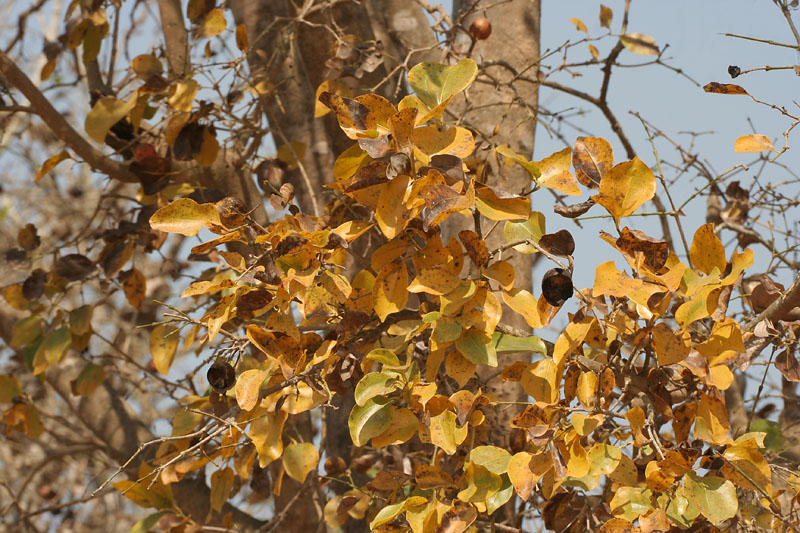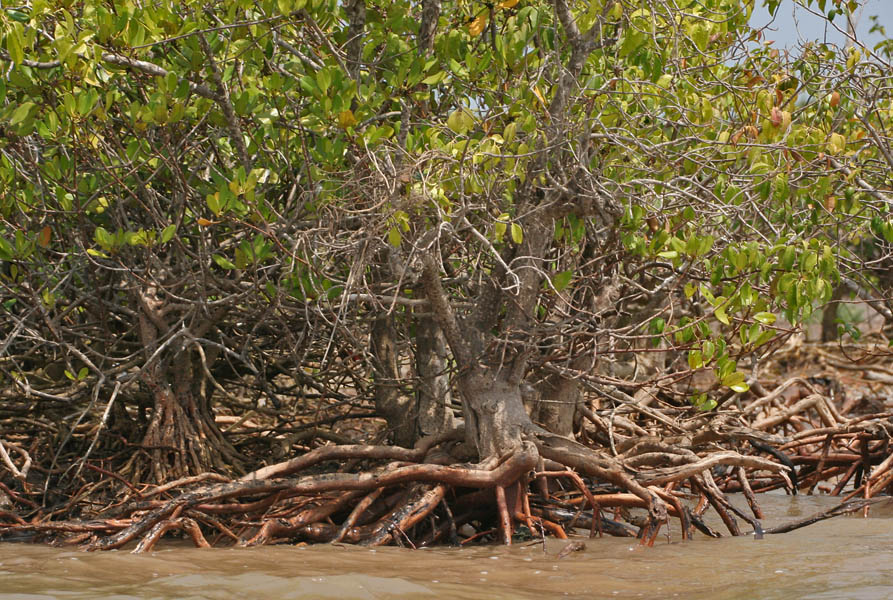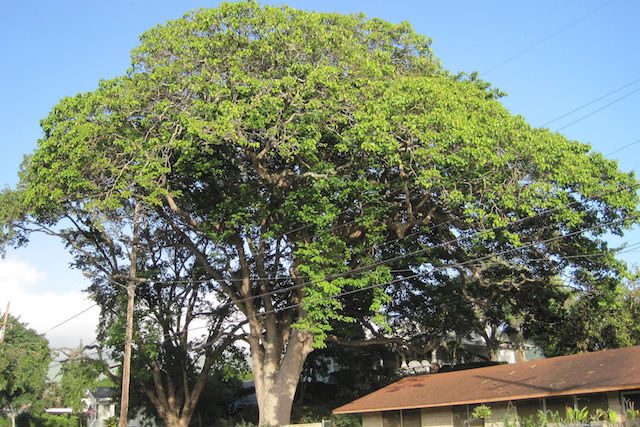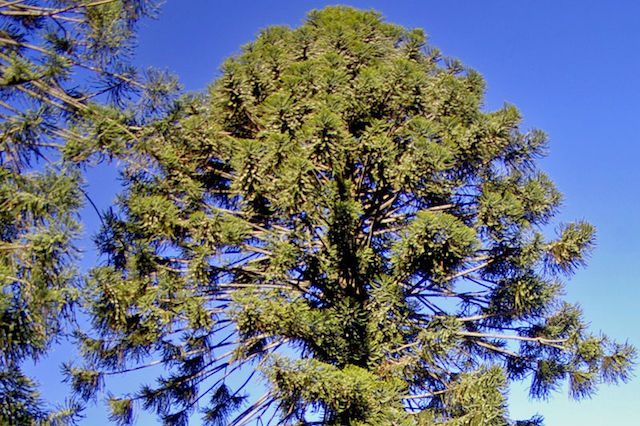TOP 10 DANGEROUS TREES ON EARTH.









10. Manchineel Tree

It looks like an apple, feels like an apple, but it is a fruit that is extremely dangerous to your health. And the tree that it comes from is so toxic that you could literally be burned just as a result of being careless enough to stand beneath its beautiful leafy branches on a rainy day. Nicknamed“manzanilla de la muerte” (meaning “little apple of death” in Spanish), the deadly Manchineel tree is an endangered tree species native to the Caribbean coasts including regions extending along Florida, Mexico, and Central and South America.
Eerily related to apple trees and resembling them greatly in both its fruit and vegetation, the so-called “beach apple” contains the carcinogenic & highly poisonous chemical compound known as phorbol along with a range of unknown chemical mixtures to great toxic effect. Any direct human contact with the tree may result in painful burns to the skin, while ingestion of the “apples” can lead to death. Furthermore, even if you do not eat from the tree or actually touch it there is a serious risk to your health and wellbeing. Just standing under the tree during rain may cause skin rashes and burns, while if any of the contaminated water reaches your eyes, or exposure to smoke from burning Manchineel wood, may even lead to ocular burns with lasting eye damage.
9. Suicide Tree

It is not often that a murder weapon or means of ending one’s own life is depicted as a tree, even in popular fiction. Yet, creative writers might do well to literally branch out in their literary devices and consider Cerbera odollam as a real-life inspiration for their darkest plots. Widely known as theSuicide Tree, this superficially innocent looking species packs a potent concoction of noxious chemicals that are quite deadly to humans. Not surprisingly, the botanical components of this tree been recruited as an organic and completely natural means of botanical murder.
Native to India, this tree species is frequently used in private landscaping projects in the form of a hedge due to its intruder deterrent capabilities as a super-toxic tree. While toxic, the plant does not have a particularly strong flavor compared to spicy cooking often served in regions where the tree is found or introduced. Due to the easily covered up flavor of this species, a dose of suicide tree in a spicy meal has also been used by those targeting a person for murder in addition to the many tragic cases where people take their own life by ingesting this plant. During witch trials in Madagascar, where the tree is also native, numerous deaths occurred during “trial by ordeal” proceedings where Suicide Tree ingestion was involved. Nasty!
8. Coconut

We eat coconuts, we tout them as a fabulous health food (which they are), and we might be able to save ourselves if we really were stranded on a desert island with a few rocks by breaking open coconuts to drink and eat. Yet, the bulk and mass of coconut fruits, coupled with hungry human’s desire to stand close to them or try to obtain their unfallen fruit means that us enterprising primates have, on some occasions, been passively bludgeoned to death by this species. Filled with pith and water, encased by a hardened shell and weighing more than 3 pounds, a coconut can do a great deal of damage should it fall at the moment one is standing underneath the coconut tree.
The danger is made worse by their unpredictable moment of falling and the height of the smooth trunked palm trees on which they grow. Falling coconut signs are posted widely in the tropics, yet multiple tragic deaths have been documented in eyewitness accounts, doctor’s reports, and medical journals in countries ranging from Malaysia and Thailand to Sri Lanka and New Guinea from blunt force trauma to the skull. While exaggerated in the media, over 15 documented fatality cases since the 1770s, most of which occurred within the past 100 years, highlights the risk.
7. Strychnine Tree

It may come as a surprise to some to learn that Strychnine is not some mysterious manufactured lab chemical, but rather a nasty elixir of death produced from a tree, which not surprisingly is to be approached with great caution. Immediately recognizable by its Latin name and common name alike, the tree species Strychnos nux-vomica (or the Strychnine Tree) is a species native to India and Southeast Asia that has become notorious as a deadly tree. The tree is the very source of the deadly poison strychnine with a history of wide use on animals deemed to be pests and sometimes, on humans who get in the way of someone malevolent and out for chemical based means of murder.
The deceptively ordinary-looking branches bear thick leaves and also carry loads of dark, dollar-like seeds which are the source of the strychnine poison. The seeds present an expensive or deadly medical problem if ingested. Eye pain, dizziness, muscle cramping, paralysis and a heavy tongue are among the nasty symptoms that a victim may face if foolish enough to ingest the raw plant material or somehow end up poisoned by strychnine. Despite its toxicity, the plant has medical applications in cancer treatment.
6. Bunya Pine
Being struck dead by a pinecone might be compared in popular imagination to the inane proposal of someone being beaten to death with a chicken feather, yet the Bunya Pine is a prehistoric monster tree so deadly in potential that barricades have been used just to make sure someone does not get squashed to death by a 22 pound pinecone from hell. Growing up to 148 feet in height, the Bunya pine is defined by thick bark, prehistoric looking sprays of course, large pine needles and gigantic pinecones that pose a lethal threat, or at least present the danger of catastrophic injury.
Unlike broken branches, which may fall due to damage in more limited circumstances, Bunya Pine cones are of course actually meant to fall from the tree in the interests of reproduction, and when they do, anyone standing under the tree is just begging for a cracked head. In San Francisco, a lawsuit for brain damage was started after a man was struck in a park by a giant falling cone from the perhaps recklessly introduced species, causing serious head injuries. Dating back to prehistoric times of the Mesozoic, the Bunya pine is a living fossil native to Queensland, Australia. Ironically, the giant size of the pinecones results in the ability of the tree to reproduce by seed dispersal being somewhat limited as no animal will transport the cones, and once detached, the heavy cones fall straight down to the forest floor from their tree.
5. Milky Mangrove

Mangrove trees might be thought of as novel and beloved plants that offer costal communities and environmental engineers a cool and natural way to stabilize shores or as an icon of tropical coastlines with crabs clinging to their roots. Yet, a skull and crossbones sign might as well be affixed to the stems of certain mangrove patches due to the danger posed by the exact species from which they are formed. Distributed widely in East Asian, Southeast Asian and Australasian waters is the Milky Mangrove, a toxin-oozing tree that humans must not touch, climb or otherwise handle due to its incredibly toxic composition.
The glossy-leaved trees, which may reach over 65 feet in height, have spiked flowers with a pungent smell, while a white, milky sap will flow from any damaged surface of the plant, whether scratched, poked or snapped. The caustic chemicals released are contained within a latex solution that is extremely harmful to any intruder or potential consumer of the plant, human or otherwise. Sap of the lush looking Milky Mangrove contains an awful mix of chemicals that may not only irritate human skin by causing swelling and painful blisters but also cause non-permanent blindness upon contact between the sap and human eye tissue.
4. Sandbox Tree

When venturing into natural areas, one is wise to avoid stampeding animals, but the risk of being smashed by a tree in the midst of reproduction is probably the last threat of which hikers would think. Being poisoned or struck by the falling fruit of a tree is within the realm of easy imagination, but a grenade dispersing tree sounds too much like military sci-fi to be part of the real natural world. But this threat is real and dangerous to humans, thanks to the bizarre Sandbox Tree, a species native to tropical parts of North America and South America.
Also called the Dynamite Tree, the potentially 200-foot-tall tree launches large pods that explode, propelling bulky seed pod fragments at speeds of 160 miles per hour, landing 100 feet or more away from the tree. Resembling pumpkins, the bizarre biological grenades can cause serious injury if the sharp fragments are blasted into the body of any human or animal within the vicinity of the reproducing tree. In addition to the “criminally reckless” way in which the Sandbox Tree reproduces, the tree itself is fortified with nasty spikes running up the trunk and laced with highly toxic sap known to be dangerous to humans.
3. Gympie Gympie
Stinging nettles may be known as herbs that are annoying and painful if touched, only to be turned into a tasty vegetable if steamed after handling with thick gloves an ample caution. Yet, a stinging nettle on steroids found in exotic locations takes on the form and appearance of a tree, while its ability to poison, inflict pain and even kill make it the stuff of legends and a high-ranking real life hazard to explorers of the woods.
The oddly named Gympie Gympie of Australia is a horror tree equipped with stinging vegetation and capable of delivering toxic chemicals upon skin contact that may kill humans and large animals or at least cause serious discomfort that in some cases may persist for months on end. Inflicting agony with its monster sized stingers, the stinging tree is one to avoid at all costs. Among the most notorious cases of Gympie Gympie encounters was that of an Australian officer, who is said to have committed suicide after being stung, while chemical weapons research interest has been shown in the species, apparently with a view to weaponizing the plant. Pain may persist for multiple years after being stung, with victims having to be strapped to a hospital bed or suffering loss of visual function.
2. Common Yew

While the deadly plant called Hemlock (which killed Socrates) was not the coniferous hemlock tree but rather a poisonous herb in the carrot family, Common Yew is the real thing when it comes to deadly conifer trees capable of ending lives upon ingestion. Relatively small for a conifer, the dull-needled, flexible tree has been used as a source of bendable wood for archery products since ancient times. The tree is also extremely poisonous, and stands out among coniferous trees for the remarkable and persistent toxicity of its vegetation, fruit, seeds and woody components.
Literally a garden variety killer, the compact, attractive conifer is readily manipulated into attractive hedging, despite the uncontrolled lethality of its toxins. Native to the British Isles, Europe, North Africa and West Asia, the Common Yew is known for having been responsible for fatal poisonings and in some cases, as a means of suicide aided by an apparently harmful knowledge of plant properties. The female Yew tree produces attractive red berries, which do not contain the deadly toxins, but encased within their flesh are deadly toxin bearing seeds that could be easily ingested with the berries if any error were made in stripping the flesh away from the deadly seeds. Uncomfortably, the Yew toxins are persistent, meaning that even when cut, the branches and leaves do not lose their innate extreme toxicity.
1. Namibian Bottle Tree

Most deadly trees look deceptively normal, akin to edible vegetation or at least typical shade trees in their general appearance. Yet the Namibian Bottle Tree looks less like a tree than a bottle of poisonous grog fit to do away with any living thing that drinks it. A tree of the desert, the Namibian Bottle Tree must both find a solution to intermittent and sparse water resource availability and determined attention from desert animals that might be keen on an easy drink.
Seeming to devote more of its living bulk to water storage than greenery, the Namibian Bottle Tree species is so poisonous that extractions from the bizarre looking desert tree, which may grow over 6 feet in height, has been used by native bushmen tribes as a poison for hunting arrows. So toxic is this small but unearthly tree that bowls carved out of the tree’s meager supply of wood have been filled with water and used to poison birds used as game, the hope being that not enough to poison the human eaters of the bird would be ingested. Its branches guarded by fierce thorns, the bottle tree bears its poisonous sap to protect its carefully stored water supply, which would otherwise be raided by thirsty animals ripping into the water hoarding desert tree.

Comments
Post a Comment